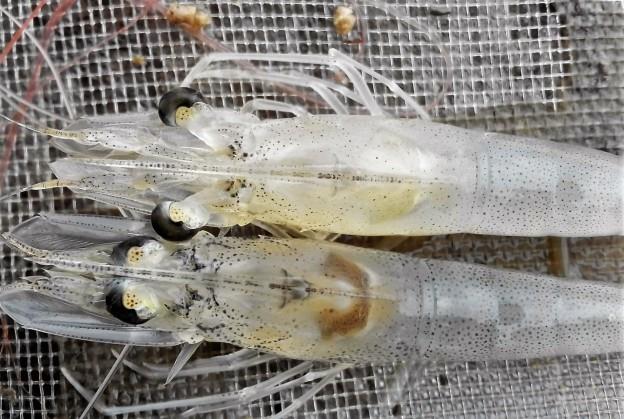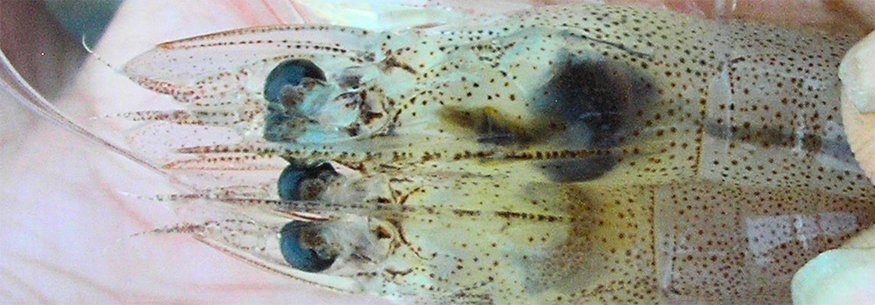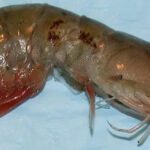Necrotizing hepatopancreatitis (NHP)
Necrotizing hepatopancreatitis, NHP, is a severe bacterial disease affecting shrimp aquaculture. It was first reported in 1985 from shrimp ponds in Texas, causing significant mortality and devastating damage to shrimps. NHP has since been observed in shrimp aquaculture in Central and South American countries, and possibly in the Eastern Hemisphere.
The most important factors related to prevalence of NHP are increasing salinity and temperature. The reported hosts are Litopenaeus vannamei, L. setiferus, L. stylirostris, Farfantepenaeus aztecus, and F. californiensis.
NHP-bacterium (NHPB) is a Gram-negative, pleomorphic, obligate intracellular bacterium that is uncultivable through fixed cell lines or traditional bacteriological methods. Therefore, NHP laboratory research is dependent on maintaining the disease agent in live animals. Unpleasant symptoms of NHP include decreased feed intake, emptyness of the bowels, lethargy, anorexia, and a pale and atrophied hepatopancreas.

Symptoms of Necrotizing hepatopancreatitis:
Note: Affected animals may show one or more of the following symptoms, but the pathogen may still be present in the absence of any symptoms.
Symptoms of the Necrotizing hepatopancreatitis in the farm, reservoir, or pool are:
- Lethargy
- Slimming
- Severe protozoan or bacterial sedimentation
- Decreased growth rate
Gross pathological symptoms are:
- Softshell
- Loose body
- Black gills
- Empty intestinal tract
- Atrophied or atrophied digestive gland (hepatopancreas), which looks pale white
- Black streaks (melanization) in the hepatopancreas.
Microscopic pathological signs are:
- Multifocal granulomatous lesions in the hepatic ducts of the pancreas, with atrophy of the epithelial cells of the adjacent pancreatic ducts.
- Tubular cells within granulomatous lesions that can become hypertrophied and contain basophilic organisms in the cytoplasm.
- Scratching of tubule epithelial cells
- Severe hemocytic inflammation of intratubular spaces.






